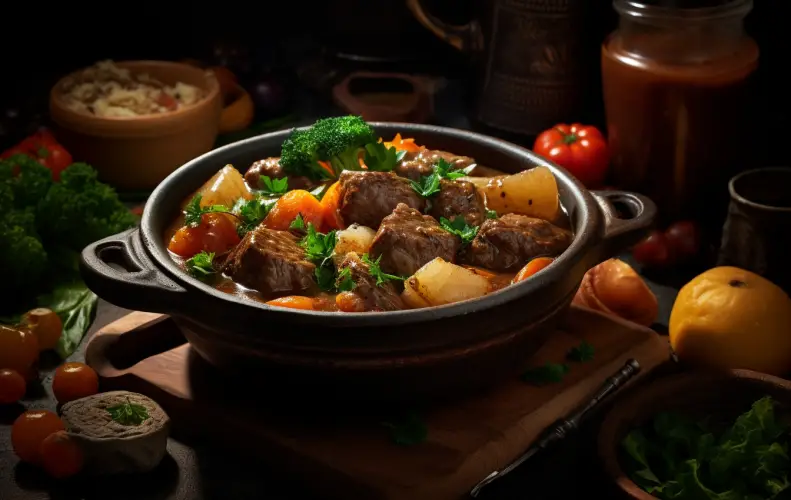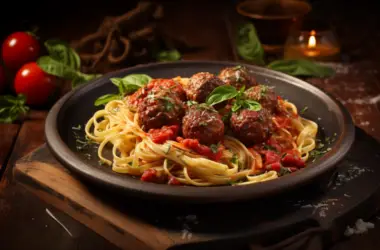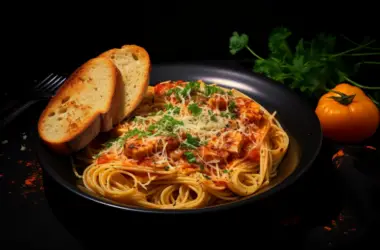Table of Contents Show
Introduction to Beef Stew and Its Versatility
Beef stew is a timeless classic that has warmed the hearts and satisfied the taste buds of countless generations. This hearty and comforting dish has its roots in traditional cuisine, with variations found in cultures around the world. From the rich and savory French boeuf bourguignon to the robust and spicy Hungarian goulash, beef stew has become a culinary staple that transcends boundaries.
The beauty of beef stew lies not only in its deliciousness but also in its versatility. While the traditional recipe typically includes beef, vegetables, and a flavorful broth, there is an endless array of ingredients that can be incorporated to enhance and elevate the dish. By experimenting with different flavors and ingredients, you can create unique and personalized variations that cater to your taste preferences.
In this comprehensive blog post, we will delve into the world of beef stew and explore the various elements that make it so versatile. We will start by discussing the essential ingredients for creating a mouthwatering beef stew, including the best cuts of beef, the perfect selection of vegetables, and the herbs, spices, and seasonings that bring out the flavors.
Next, we will dive into the classic pairings that have been enjoyed alongside beef stew for generations. We will explore traditional side dishes that complement the rich flavors of the stew, such as creamy mashed potatoes or crusty bread. Additionally, we will uncover the secrets of pairing beef stew with wines and beers that enhance the overall dining experience. We cannot forget the comforting comfort foods that make for a perfect match with beef stew, and we will discover how to recreate nostalgic combinations for a cozy and hearty meal.
But why stop at the classics? We will also venture into the realm of creative and unexpected pairings. From non-traditional starches like polenta or couscous to global fusion ideas that infuse diverse culinary influences, we will explore how to take beef stew to new and exciting heights. Moreover, we will cater to those following vegetarian or vegan diets by providing alternatives and pairing suggestions for plant-based stews.
As we near the end of our journey, we will not forget the sweet endings and leftover transformations. We will explore dessert suggestions that perfectly complement a hearty beef stew meal, and we will unveil creative ways to repurpose leftover beef stew into new and enticing dishes, such as pies, sandwiches, or pasta sauces.
So, whether you are a seasoned food enthusiast or a curious beginner in the kitchen, this blog post is designed to inspire and guide you on your quest for the perfect accompaniments to beef stew. Get ready to embrace the versatility of this timeless dish, and let your taste buds embark on a flavorful adventure. Let’s dive into the world of beef stew and discover the endless possibilities that await.
Essential Ingredients for Beef Stew
Beef stew is a dish that relies on a few key ingredients to create its signature flavors and textures. Understanding the role of each ingredient is crucial in crafting a perfect beef stew that tantalizes the taste buds. In this section, we will explore the essential components that make up a mouthwatering beef stew.
Beef Cuts Ideal for Stew
The choice of beef is crucial in determining the tenderness and flavor of your stew. While various cuts can be used, some are better suited for stewing due to their marbling and connective tissue content. These cuts are known for their ability to break down and become tender during the long cooking process, resulting in a rich and succulent stew.
One popular choice for beef stew is chuck roast, which comes from the shoulder of the cow. It is well-marbled and contains collagen that breaks down during cooking, resulting in a luscious texture and deep flavor. Another excellent option is beef brisket, known for its hearty and robust taste. Brisket requires slow cooking to achieve its full potential, but the result is a melt-in-your-mouth tenderness that elevates the stew. Other cuts like shank, round, or short ribs can also be used, each offering its unique characteristics to the final dish.
When selecting the beef for your stew, look for cuts with a good amount of marbling, as this fat will render during cooking, adding richness and depth to the stew. Opt for cuts that require longer cooking times to ensure the meat becomes tender and develops a rich flavor profile. It is also essential to trim excess fat from the meat before cooking to avoid excessively greasy or oily stew.
Vegetables for Beef Stew
Vegetables play a vital role in beef stew, not only for adding flavor but also for providing texture and balance to the dish. The combination of vegetables used may vary depending on personal preference and regional variations, but certain vegetables are commonly found in beef stew recipes.
Carrots are a staple vegetable in beef stew, providing a slightly sweet and earthy flavor. They add a delightful crunch when cooked to perfection, and their vibrant orange color adds visual appeal to the dish. Potatoes are another traditional choice, offering a creamy texture and absorbing the flavors of the stew. They help thicken the broth, adding body and richness to the overall dish.
Onions and garlic are essential aromatics that form the base of many stew recipes. They lend depth and complexity to the flavors, developing a savory and aromatic foundation for the dish. Celery, with its crisp and refreshing taste, adds a hint of herbal notes to the stew. Other vegetables like mushrooms, peas, parsnips, and turnips can also be incorporated to enhance the flavor profile and add variety to the stew.
When preparing the vegetables for the stew, it is important to consider the cooking time required for each. Harder vegetables like carrots and potatoes should be added earlier in the cooking process, allowing them to cook thoroughly and infuse their flavors into the stew. More delicate vegetables, such as peas or green beans, can be added towards the end to maintain their texture and vibrant color.
Herbs, Spices, and Seasonings
To elevate the flavors of your beef stew, herbs, spices, and seasonings are essential components that add depth, complexity, and a touch of aromatic magic. The combination of these flavorful additions can transform a simple stew into a culinary masterpiece.
Bay leaves are a common herb used in beef stew, imparting a subtle earthy flavor and aroma. Thyme is another herb that pairs well with beef, lending a slightly floral and minty note. Rosemary, with its robust and pine-like flavor, can also be used sparingly to add a distinctive herbal touch.
When it comes to spices, a classic choice is black pepper, which adds a subtle heat and complexity to the stew. Paprika, whether sweet or smoked, contributes a vibrant red color and a hint of smokiness. Other spices like cumin, coriander, or even a pinch of cinnamon can be used to add warmth and depth to the stew.
Salt is a crucial seasoning that brings out the flavors of the ingredients and balances the overall taste. It is important to season the stew properly, layering the salt throughout the cooking process to ensure each component is adequately seasoned. Taste and adjust the seasoning as needed, keeping in mind that flavors may concentrate as the stew simmers.
In addition to these essentials, you can experiment with other seasonings and flavor enhancers to personalize your beef stew. Worcestershire sauce, soy sauce, red wine, or even a splash of balsamic vinegar can add a delightful tang or umami kick to the stew. The key is to balance the flavors, allowing each ingredient to shine while harmonizing together to create a symphony of taste.
Classic Pairings for Beef Stew
Beef stew, with its rich and hearty flavors, calls for classic pairings that complement and enhance its taste. These time-tested combinations have stood the test of time and have become beloved culinary traditions. In this section, we will explore the classic side dishes, wine and beer pairings, and comforting comfort foods that perfectly accompany a steaming bowl of beef stew.
Traditional Side Dishes
When it comes to traditional side dishes for beef stew, there are a few tried-and-true options that have become synonymous with this comforting meal. One of the most popular choices is creamy mashed potatoes. The velvety texture of the mashed potatoes pairs harmoniously with the tender chunks of beef and rich gravy, creating a satisfying and comforting combination.
Another classic side dish is crusty bread, which is perfect for sopping up the flavorful broth. Whether it’s a warm baguette, a rustic sourdough loaf, or even homemade biscuits, the crusty exterior and soft interior of the bread provide a delightful contrast to the tender beef and vegetables. You can also opt for biscuits or dinner rolls, which add a touch of fluffiness to the meal.
If you prefer something lighter, consider serving a crisp green salad alongside your beef stew. The freshness and crunch of the salad provide a refreshing contrast to the rich and savory flavors of the stew. A simple green salad with mixed greens, cherry tomatoes, and a tangy vinaigrette can brighten up the meal and add a burst of freshness.
Wine and Beer Pairings
Pairing the right wine or beer with your beef stew can elevate the dining experience to new heights. The rich and robust flavors of the stew can be beautifully complemented by carefully chosen beverages that enhance the overall taste.
For wine lovers, red wines are a natural choice. The robust flavors of beef stew can stand up to full-bodied red wines with rich tannins. Consider pairing your stew with a bold Cabernet Sauvignon, a spicy Syrah, or a rustic and earthy Zinfandel. These wines have the depth and intensity to complement the hearty flavors of the stew.
If you prefer beer, opt for styles that can match the robustness of the beef stew. A malty and slightly bitter brown ale or a robust porter can provide a great balance to the rich flavors of the stew. The roasted maltiness of these beers can enhance the caramelization of the beef, while the slight bitterness cuts through the richness, creating a harmonious pairing.
For those who enjoy a lighter and more refreshing option, a Belgian-style saison or a crisp and citrusy IPA can add a delightful contrast to the stew. The lively carbonation and fruity notes of these beers can provide a cleansing effect on the palate, allowing you to fully enjoy each bite of the stew.
Comforting Comfort Foods
Comfort foods have a way of making us feel warm, cozy, and content. Pairing beef stew with comforting classics can create a soul-satisfying meal that warms both the body and the spirit. Here are a few comforting comfort foods that go hand in hand with beef stew.
Mac and cheese is a beloved favorite that pairs exceptionally well with beef stew. The creamy and cheesy pasta provides a luxurious and indulgent contrast to the hearty stew. The combination of tender beef, flavorful gravy, and gooey cheese creates a comforting harmony that is hard to resist.
Cornbread is another classic comfort food that complements beef stew wonderfully. The slightly sweet and crumbly texture of cornbread adds a delightful contrast to the rich and savory stew. Whether served as a side or used to soak up the delicious broth, cornbread adds a touch of Southern charm to the meal.
For those seeking a taste of Ireland, serving beef stew with buttery and flaky Irish soda bread is a match made in culinary heaven. The dense and slightly sweet bread pairs beautifully with the hearty flavors of the stew, creating a comforting combination that will transport you to the Emerald Isle.
In conclusion, the classic pairings for beef stew offer a variety of options to suit different preferences and tastes. Whether you opt for the traditional sides of mashed potatoes or crusty bread, indulge in wine or beer pairings, or explore comforting comfort foods like mac and cheese or cornbread, these combinations will enhance your beef stew experience and provide a satisfying and memorable meal. So, grab a spoon, ladle some stew into a bowl, and prepare to enjoy the delightful harmony of flavors that await you.
Creative and Unexpected Pairings
While classic pairings have their charm, sometimes it’s exciting to venture into uncharted territory and explore creative and unexpected combinations that can take your beef stew to new heights. By thinking outside the box and incorporating unconventional ingredients or global flavors, you can create a truly unique and memorable dining experience. In this section, we will dive into the world of creative pairings for beef stew.
Non-Traditional Starches
When it comes to starches, there are plenty of non-traditional options that can add an exciting twist to your beef stew. Instead of serving the stew with the usual suspects like mashed potatoes or crusty bread, why not try some unconventional starches?
Polenta, for example, is a versatile and creamy cornmeal dish that pairs beautifully with beef stew. The smooth and slightly grainy texture of polenta provides a delicious contrast to the tender chunks of meat and vegetables. Whether served soft and creamy or allowed to cool and firm up for slicing and grilling, polenta adds a unique dimension to the meal.
Couscous is another alternative to consider. This tiny pasta made from semolina flour is quick-cooking and absorbs flavors exceptionally well. By serving your beef stew over a bed of fluffy couscous, you introduce a North African influence to the dish, infusing it with aromatic spices and a light, fluffy texture.
For a more Asian-inspired twist, consider pairing your beef stew with steamed or stir-fried noodles. Egg noodles, rice noodles, or even udon noodles can provide a delightful contrast to the rich flavors of the stew. The noodles soak up the savory broth, creating a harmonious blend of tastes and textures.
Global Fusion Ideas
One of the joys of cooking is the ability to experiment and fuse different culinary traditions together. By infusing your beef stew with global flavors, you can create a fusion masterpiece that tantalizes the taste buds. Here are a few ideas to get your creative juices flowing:
- Asian Fusion: Add a touch of Asian flair to your beef stew by incorporating ingredients like soy sauce, ginger, and garlic. Consider adding bok choy or baby corn for a hint of freshness and crunch. Serve the stew over steamed jasmine rice or pair it with stir-fried noodles for a delightful fusion experience.
- Mexican Inspiration: Give your beef stew a Mexican twist by adding spices like cumin, chili powder, and smoked paprika. Consider incorporating ingredients like black beans, corn, or roasted poblano peppers for a Southwestern flair. Serve the stew with warm tortillas or alongside a bowl of cilantro-lime rice for a delicious fusion feast.
- Mediterranean Delight: Infuse your beef stew with Mediterranean flavors by adding ingredients like olives, sun-dried tomatoes, and fresh herbs like rosemary or oregano. Consider serving the stew over a bed of fluffy couscous or alongside a Greek salad for a taste of the Mediterranean.
By incorporating global flavors and ingredients into your beef stew, you can create a fusion masterpiece that celebrates the diversity of culinary traditions. Don’t be afraid to experiment and explore different combinations, as the possibilities are endless.
Vegetarian and Vegan Options
For those following vegetarian or vegan diets, there are plenty of alternatives to traditional beef stew that can still provide a hearty and satisfying meal. By substituting the beef with plant-based ingredients, you can create a flavorful stew that appeals to a wider range of dietary preferences.
One option is to replace the beef with hearty vegetables like mushrooms or eggplant. These vegetables have a meaty texture and can absorb flavors beautifully, making them an excellent substitute for beef. By marinating the mushrooms or eggplant in savory seasonings before adding them to the stew, you can create a rich and satisfying vegetarian or vegan alternative.
Another alternative is to use plant-based protein sources like tempeh or seitan in place of beef. These meat alternatives have a similar texture and can be marinated or seasoned to mimic the flavors of beef. By incorporating them into your stew, you can create a protein-packed and satisfying vegetarian or vegan dish.
When it comes to vegetables in vegetarian or vegan stew, the options are endless. Consider adding a variety of colorful vegetables like bell peppers, sweet potatoes, carrots, and zucchini for a vibrant and flavorful dish. Don’t forget to include aromatics like onions and garlic to build a robust flavor base.
In conclusion, the world of creative and unexpected pairings for beef stew is vast and exciting. By exploring non-traditional starches, infusing global flavors, or creating vegetarian and vegan alternatives, you can take your beef stew to new heights and delight your taste buds with unique and memorable combinations. So, embrace your culinary creativity and let your imagination run wild as you experiment with new and exciting pairings for your next beef stew adventure.
Desserts and Leftover Transformations
A satisfying meal is not complete without a sweet ending, and beef stew is no exception. After savoring the rich and savory flavors of the stew, it’s time to indulge in a delightful dessert that complements and balances the meal. In this section, we will explore dessert suggestions that pair harmoniously with beef stew, as well as creative ways to transform leftover stew into new and exciting dishes.
Sweet Endings
When selecting a dessert to follow a hearty beef stew, it’s important to consider flavors, textures, and overall balance. The dessert should provide a contrast to the savory notes of the stew while offering a satisfying and indulgent conclusion to the meal.
One classic choice is a fruit crumble or cobbler. The combination of sweet, juicy fruit and a buttery, crumbly topping creates a delightful contrast to the savory stew. Whether it’s a warm apple crumble, a tangy cherry cobbler, or a mixed berry medley, the fruity flavors and comforting textures of these desserts provide a refreshing and satisfying end to the meal.
Chocolate lovers can opt for a warm chocolate pudding or a rich, fudgy brownie. The decadent flavors and smooth textures of these desserts create a luxurious and indulgent experience. Pairing the deep, bittersweet flavors of chocolate with the savory notes of the stew can create a harmonious balance that satisfies both the sweet tooth and the craving for richness.
For a lighter and refreshing option, consider serving a fruit salad or a parfait. The vibrant colors and natural sweetness of the fruits can provide a refreshing contrast to the hearty stew. Layering the fruit with yogurt or whipped cream adds a creamy element and creates a dessert that is both satisfying and guilt-free.
Leftover Makeovers
Leftover beef stew presents an opportunity to get creative in the kitchen and transform the remaining stew into new and exciting dishes. By repurposing the stew, you can create dishes that are not only delicious but also help reduce food waste. Here are a few ideas to spark your culinary imagination:
One popular option is to turn the leftover stew into a hearty pot pie. Simply transfer the stew into a baking dish and top it with a layer of flaky puff pastry or a buttery biscuit dough. Bake it until the crust is golden brown and the stew is bubbling underneath. The result is a comforting and satisfying meal that breathes new life into the leftover stew.
Another idea is to transform the stew into a flavorful pasta sauce. Blend the stew until smooth or leave it chunky, depending on your preference. Cook your favorite pasta and toss it with the stew, adding some grated cheese and fresh herbs for an extra touch of flavor. This quick and easy transformation creates a delicious and comforting pasta dish that is perfect for a weeknight dinner.
If you’re in the mood for a sandwich, use the leftover stew as a filling. Toast some bread and layer it with the stew, adding some cheese or pickles for extra flavor and texture. Grill or panini-press the sandwich until the bread is crispy and the cheese is melted. The result is a warm, savory sandwich that is packed with the flavors of the stew.
These are just a few examples of how leftover beef stew can be transformed into new and exciting dishes. The key is to let your creativity guide you and experiment with different combinations and techniques. With a little imagination, you can turn your leftovers into delicious meals that are a far cry from the original stew.
In conclusion, a sweet ending to a beef stew meal is a delightful way to round off the dining experience. Whether you opt for a fruit crumble, a chocolate indulgence, or a refreshing fruit salad, the dessert should provide a satisfying contrast to the savory flavors of the stew. Additionally, repurposing leftover stew into pot pies, pasta sauces, or sandwiches allows you to reduce food waste and create new and exciting dishes. So, don’t let your leftover stew go to waste – get creative and enjoy the delicious possibilities that await.
Embracing the Versatility of Beef Stew
Throughout this blog post, we have explored the various elements that make beef stew such a versatile and beloved dish. From the essential ingredients that form the foundation of the stew to the classic pairings that enhance its flavors, we have journeyed through a world of culinary possibilities. We have also delved into creative and unexpected pairings that push the boundaries of tradition, as well as explored dessert options and ways to transform leftover stew into new and exciting dishes.
The versatility of beef stew lies not only in its ability to adapt to different flavors and ingredients but also in its ability to bring people together. Whether you’re serving a classic beef stew with mashed potatoes at a family gathering or experimenting with fusion flavors for a dinner party, beef stew has a way of creating a sense of warmth, comfort, and togetherness.
One of the joys of cooking and exploring the world of food is the opportunity to experiment and make a dish your own. While traditional recipes and pairings are wonderful, there is no limit to the combinations and variations you can create with beef stew. By understanding the fundamental elements of the stew and considering the flavors and textures that complement it, you can embark on a culinary journey of discovery and create your own signature stew.
So, whether you choose to stick with the classics and savor the comforting flavors of mashed potatoes and crusty bread, or venture into the realm of creative fusion and unexpected pairings, the key is to embrace the versatility of beef stew and let your imagination guide you. Have fun, be bold, and enjoy the process of creating a meal that is uniquely yours.
In conclusion, beef stew is a timeless dish that offers endless possibilities for pairing and experimentation. From traditional side dishes and wine or beer pairings to creative fusion ideas and unexpected starches, there is a world of flavors waiting to be explored. Desserts provide a sweet ending to the meal, while repurposing leftover stew allows you to minimize waste and transform the flavors into new and exciting dishes. So, let’s celebrate the versatility of beef stew and embark on a culinary adventure that will delight the taste buds and create memorable dining experiences.
Conclusion: Embracing the Versatility of Beef Stew
Throughout this comprehensive blog post, we have explored the world of beef stew and uncovered its incredible versatility. From the essential ingredients that form the foundation of a delicious stew to the classic pairings that enhance its flavors, we have taken a deep dive into the endless possibilities that this comforting dish offers.
Beef stew is more than just a meal—it is a culinary experience that brings people together. Whether enjoyed on a cozy winter evening or served at a festive gathering, the aromas and flavors of beef stew have a way of creating a sense of warmth, comfort, and nostalgia. It is a dish that transcends cultural boundaries, with variations found in cuisines around the world.
By understanding the key components of beef stew and experimenting with different ingredients, flavors, and pairings, you can personalize this classic dish and make it your own. Whether you choose to stick with traditional side dishes like mashed potatoes and crusty bread or explore creative and unexpected combinations, the possibilities are truly endless. The joy of cooking lies in the freedom to innovate and create, and beef stew provides the perfect canvas for culinary exploration.
Additionally, we have discussed the importance of desserts to round off the meal and how leftover beef stew can be transformed into exciting new dishes. From fruit crumbles and chocolate indulgences to pot pies and pasta sauces, there are countless ways to extend the enjoyment of your beef stew beyond the initial serving.
So, as you embark on your next beef stew adventure, remember to embrace the versatility of this beloved dish. Allow your taste buds to guide you, and don’t be afraid to step outside your culinary comfort zone. Whether you choose to honor tradition or venture into new and exciting territory, the experience of creating and enjoying a delicious beef stew is sure to leave a lasting impression.
In conclusion, beef stew is a culinary masterpiece that offers endless opportunities for exploration and experimentation. It is a dish that brings people together, creates memories, and satisfies the soul. So, grab your apron, gather your ingredients, and let your creativity soar as you embark on a flavorful journey through the world of beef stew. Enjoy the process, savor every bite, and celebrate the versatility of this timeless dish.









